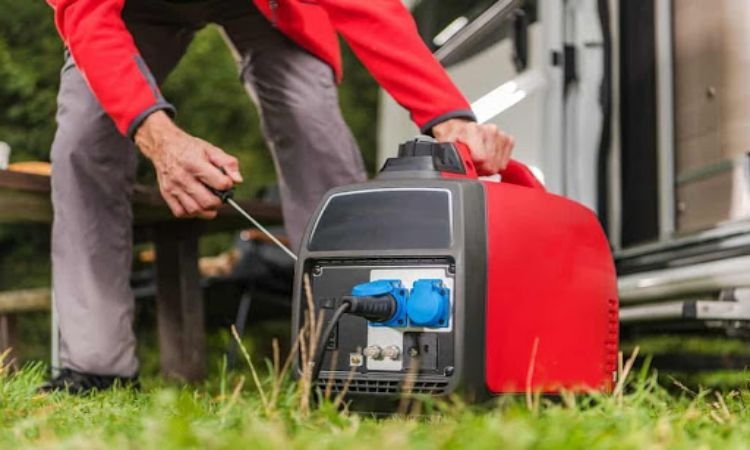 You can easily transport a portable generator from one place to another, which makes it different from other powerful kinds of generators. It has a wide range of prices and watts. You may get caught up while checking the figures. So before you get a portable unit, you need to choose the style you want.
You can easily transport a portable generator from one place to another, which makes it different from other powerful kinds of generators. It has a wide range of prices and watts. You may get caught up while checking the figures. So before you get a portable unit, you need to choose the style you want.
Styles of Portable Generators
The available styles are as follows:
Battery or Solar
Are you searching for a unit that will power itself as well as your stuff? An alternative electricity station is increasingly becoming popular because more people are demanding portable and renewable energy. This unit utilizes solar energy, thereby, eliminating gasoline, noise, or fumes. It is ideal for camping, RVing, or places with no electricity.
The unit is also safe to use with sensitive electronics. As solar technology keeps improving, the space between other energy options and solar energy is quickly closing. You can check out this website to find out the pros and cons of a solar generator.
 Recreational Inverter
Recreational Inverter
Camping generators are usually annoying and loud, but all that is changing. This is because the new recreational inverter unit is replacing the traditional camping generator. The noise levels and prices have recently dropped significantly, and tailgaters and RV enthusiasts appreciate the generator.
Emergency Units
A recreational generator is great for camping or tailgating, but when there is a blackout in your house, it calls for an emergency unit. The unit has a large and powerful engine that restores power to important appliances like lights, television, sump pumps, and refrigerators. It also has a large gas tank that enables it to run for a long time without interruption.
Semi-Pro Unit
It is popular among contractors who use electricity frequently and homeowners with a very high taste. The components are durable, and the engine is of high quality. It can also restore power when there is a blackout at home or at a construction site.
Professional Unit
This is a serious duty generator for professionals. It is constructed with components of commercial quality and designed to operate for a whole day. Its basic features – GFCI outlets, hour meters, and lifting eyes – are necessities, not accessories. You can click on https://home.howstuffworks.com/question117.htm to see how a GFCI outlet works.
Selecting the Ideal Generator
 Now that we have seen the different styles of portable generators, let’s look at how to choose the one that fits your needs.
Now that we have seen the different styles of portable generators, let’s look at how to choose the one that fits your needs.
Create a List of Appliances You Want to Power
When you experience a blackout, what are the first things you will likely power? Lights and appliances only, or will you include electronics and computers? Some homes have medical equipment, which will be a priority, others just want power so they can use the ice in the freezer to stock food supplies.
However, if you need a unit for your job site or campground, ensure you list the appliances or tools you will power. Do you want to power the work lights, all your tools, and the radio? If you are on a fishing trip, how many entertainments, cooking, or heating accessories or appliances will you use at a time?
Find Out What You Need to Start Your Appliances
It is important to check whether the generator will start, not just run the appliances. There is a starting wattage for appliances that have motors. This wattage might be 2 to 3 times more than what is needed to run it. You can confirm this from the manufacturer’s guide.
Get the Total Wattage You Will Use
In this part, you will get the sum of your appliances’ running wattage. This will give you the sum of running watts which your generator requires to run the appliances. The next step is to get the sum of starting wattages and add it to the sum of running wattages. This will help you to know the total wattage you will use.
Armed with this information, you can walk into any electronics store and compare and shop for a generator that matches your total power needs. You must note that connecting a generator to your home’s wiring directly is very dangerous. So if you want to connect it to the electrical system in your home, you must hire the services of a certified electrician. They will install the matching transfer switch for the unit.
How to Buy a Portable Power Generator
 The following steps will help you buy the right portable power generator:
The following steps will help you buy the right portable power generator:
- Determine how much wattage you want to use. A portable unit ranges from nine hundred to ten thousand watts.
- Determine how you will transport the unit. Some have wheels and are also lightweight for ease of movement. So if you want a unit with wheels, you can look out for puncture-resistant, never-flat wheels for easy transportation in rugged terrains like job sites.
- Ensure the unit has a runtime of at least ten hours. If you are a constructor, this will allow you to complete a whole day’s job. Also, homeowners will be able to use it all through the night without waking up to refuel it.
- Count the number of outlets you want on the unit. You can determine this from the number of appliances you will power simultaneously. You can also check the appliances to confirm the outlet types you need.
You can visit Doosan portable power generators to get more help with choosing the type of generator that is right for you.
Conclusion
A power supply is essential because we need it to run appliances and equipment that make life easy. Portable generators offer a dependable power supply during blackouts. You can also use them to run tools on construction sites or make your recreational sites more comfortable when there’s no electricity.




